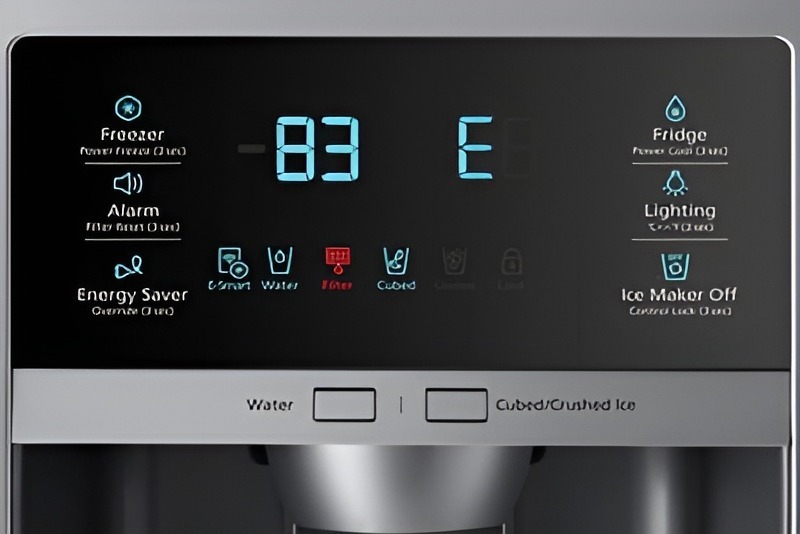2/2/2025 4:49 AM
 The smooth operation of a business frequently depends on the dependability of your laundry or commercial kitchen equipment. This is the reason why the significance of prompt and effective commercial appliance repair services cannot be overstated. Whether you operate a busy restaurant or a heavily frequented laundromat, your equipment must be in optimal condition to meet the needs of your business. In this section, we explore various DIY troubleshooting methods and frequent problems you may face with commercial appliances, potentially aiding you in reducing repair expenses. A prevalent problem with commercial ovens, which falls under the Oven & Stove repair category, is inconsistent heating. Irregular heating may result from a defective heating element or temperature sensor. To address this issue, begin by examining the heating elements for any visible damage. Then, use a multimeter to verify the temperature sensor for any inconsistencies. Changing out defective components often resolves the problem and guarantees that your oven keeps consistent heating levels. For commercial refrigerators, especially in busy settings, a common issue is the appliance failing to sustain cold temperatures, categorizing it under Refrigerator repair.This might be caused by a faulty thermostat or an obstructed condenser coil. A fast DIY fix consists of cleaning the condenser coils using a coil brush or vacuum. If this does not fix the cooling problem, it may be necessary to check the thermostat and replace it if needed. Commercial dishwashers, categorized under Dishwasher repair, frequently experience drainage issues, resulting in water accumulating at the bottom. This is often due to a blocked drain. Detaching the dishwasher drain hose and clearing it might possibly resolve this issue. Make sure to remove any foreign objects from the dishwasher filter as well. Grasping the error codes shown by your appliances is essential. For example, when your LG commercial washing machine shows a 'LE' error code, it typically indicates a locked motor issue. This issue commonly occurs because of a faulty rotor position sensor or, straightforwardly, an overloaded drum. Attempt resetting the washing machine or decreasing the load volume to resolve the problem. Although a DIY method can frequently address minor glitches, there is a stage where expert commercial appliance repair is essential. If the issue continues or appears to have intricate elements, feel free to obtain professional assistance to avoid additional harm. Routine upkeep such as cleaning and swapping out worn components can aid in reducing malfunctions and prolonging the lifespan of your appliances.
The smooth operation of a business frequently depends on the dependability of your laundry or commercial kitchen equipment. This is the reason why the significance of prompt and effective commercial appliance repair services cannot be overstated. Whether you operate a busy restaurant or a heavily frequented laundromat, your equipment must be in optimal condition to meet the needs of your business. In this section, we explore various DIY troubleshooting methods and frequent problems you may face with commercial appliances, potentially aiding you in reducing repair expenses. A prevalent problem with commercial ovens, which falls under the Oven & Stove repair category, is inconsistent heating. Irregular heating may result from a defective heating element or temperature sensor. To address this issue, begin by examining the heating elements for any visible damage. Then, use a multimeter to verify the temperature sensor for any inconsistencies. Changing out defective components often resolves the problem and guarantees that your oven keeps consistent heating levels. For commercial refrigerators, especially in busy settings, a common issue is the appliance failing to sustain cold temperatures, categorizing it under Refrigerator repair.This might be caused by a faulty thermostat or an obstructed condenser coil. A fast DIY fix consists of cleaning the condenser coils using a coil brush or vacuum. If this does not fix the cooling problem, it may be necessary to check the thermostat and replace it if needed. Commercial dishwashers, categorized under Dishwasher repair, frequently experience drainage issues, resulting in water accumulating at the bottom. This is often due to a blocked drain. Detaching the dishwasher drain hose and clearing it might possibly resolve this issue. Make sure to remove any foreign objects from the dishwasher filter as well. Grasping the error codes shown by your appliances is essential. For example, when your LG commercial washing machine shows a 'LE' error code, it typically indicates a locked motor issue. This issue commonly occurs because of a faulty rotor position sensor or, straightforwardly, an overloaded drum. Attempt resetting the washing machine or decreasing the load volume to resolve the problem. Although a DIY method can frequently address minor glitches, there is a stage where expert commercial appliance repair is essential. If the issue continues or appears to have intricate elements, feel free to obtain professional assistance to avoid additional harm. Routine upkeep such as cleaning and swapping out worn components can aid in reducing malfunctions and prolonging the lifespan of your appliances.